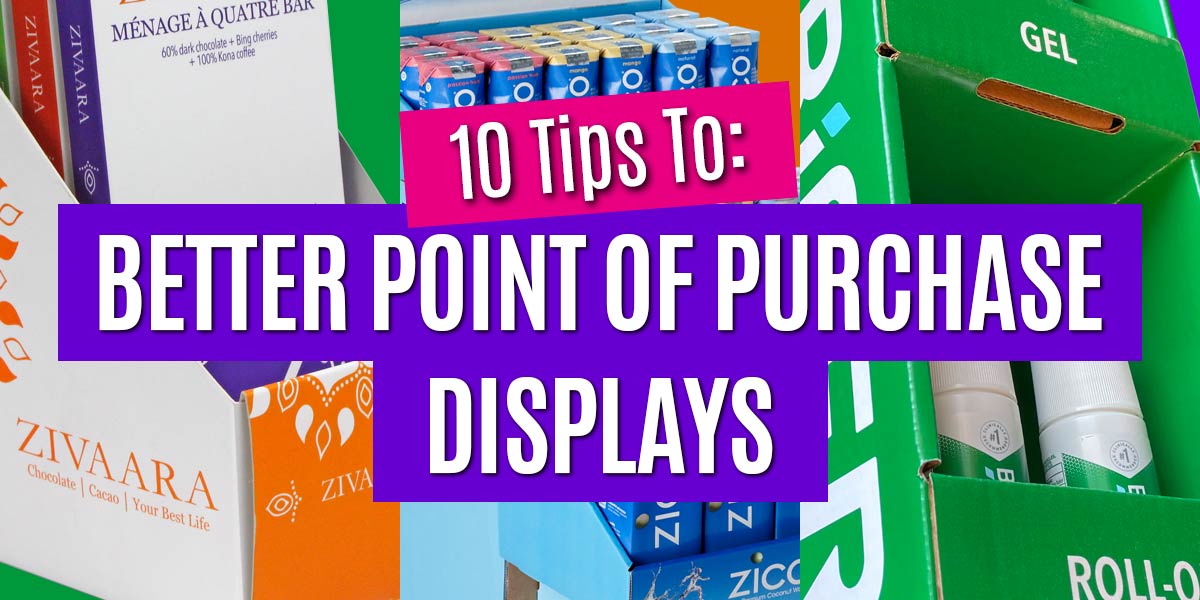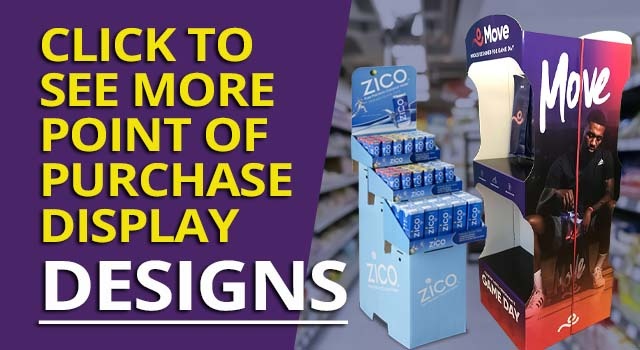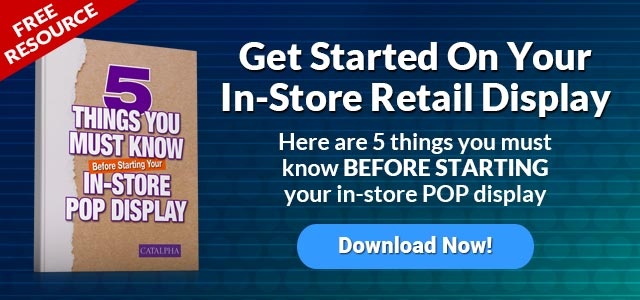Point of purchase displays are a great addition to your product marketing and if done well, can move products better than shelf sales. Knowing how to effectively design and produce a display is essential to your POP success. Here are 10 Tips that can help you build better displays...
Table of Contents
1. Understand Your Audience!
2. Tell Your Story
3. Make The Graphics Bold!
4. Keep Your Message Clear, Short and Succinct
5. Follow Your Brand Design
6. Keep Your Most Important Message at Eye Level
7. Choose The Right Size Display For Your Need
8. Consider Creating Short Runs (Small Quantity) and Test
9. Make Your Display Easy To Purchase From
10. Know The POP Display Building Process and Ultimately Your Timing
1. Understand Your Audience!!
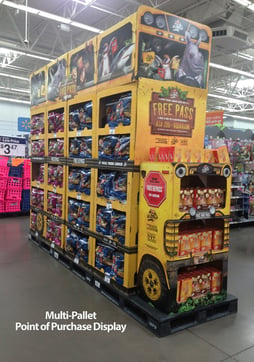 This is your number one tip! Knowing who your display is talking to will make your design and message easier to create. Is your audience a harried shopper that needs a better snack?, a mother with children looking for convenience and time savings?, a man with outdoor activities in mind? Knowing who you are talking to makes it easier to create the graphics and message to match their needs.
This is your number one tip! Knowing who your display is talking to will make your design and message easier to create. Is your audience a harried shopper that needs a better snack?, a mother with children looking for convenience and time savings?, a man with outdoor activities in mind? Knowing who you are talking to makes it easier to create the graphics and message to match their needs.
2. Tell Your Story
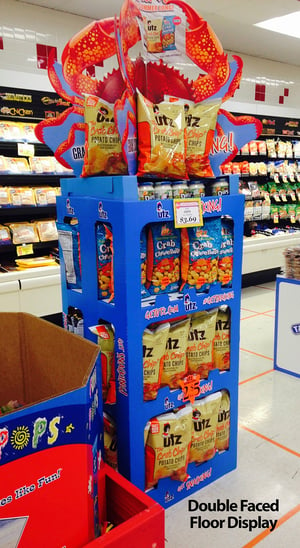 I’m sure you have one. That real reason that customers like your product. Know the USP or Unique Selling Proposition of your product. (A USP is the number one factor or reason that your product is better than the competition) What is it that attracts a customer to your product? Here’s your chance to emphasize it through images, message, color, and size. Your USP should talk to the consumer’s needs and desired result.
I’m sure you have one. That real reason that customers like your product. Know the USP or Unique Selling Proposition of your product. (A USP is the number one factor or reason that your product is better than the competition) What is it that attracts a customer to your product? Here’s your chance to emphasize it through images, message, color, and size. Your USP should talk to the consumer’s needs and desired result.
3. Make The Graphics Bold!
Why create something that will blend in? Your investment in P.O.P. demands you create the best design. The composition is so important. If you’ve got everything scaled equally the customer doesn’t know were to t o look. If you have too much content, the customer doesn’t know where to look. There is a hierarchy to your message. A progression to your messaging - 1st, 2nd and 3rd. You’ve got 3 seconds to (1) - stop them, (2) - color, product should attract their interest, (3) - convince them to buy.
o look. If you have too much content, the customer doesn’t know where to look. There is a hierarchy to your message. A progression to your messaging - 1st, 2nd and 3rd. You’ve got 3 seconds to (1) - stop them, (2) - color, product should attract their interest, (3) - convince them to buy.
4. Keep Your Message Clear, Short and Succinct
Limited space calls for a quick and to the point messaging. Don’t try to say too much. Many clients want to add the entire book about their product, mention all sizes and flavors and all the reasons you should buy.
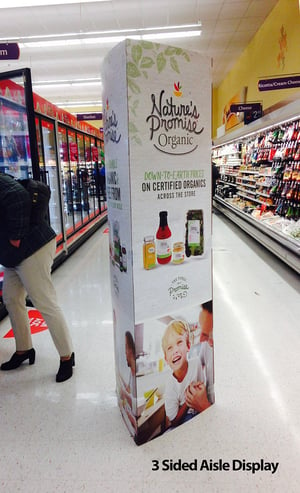 Pick 1 or 2 of the main points at most and make it clear. Confusion equals less sales. A picture is worth a thousand words. Use a visual to say the extra words.
Pick 1 or 2 of the main points at most and make it clear. Confusion equals less sales. A picture is worth a thousand words. Use a visual to say the extra words.
5. Follow Your Brand Design
Don’t create designs that just fit the message. Make it fit your brand as well. It must compliment your packaging and brand, not go off in a new direction.
Every piece of visual you put out there is building your brand recognition an adding to your brand equity. So there has to be a consistency in your visual and copy treatment.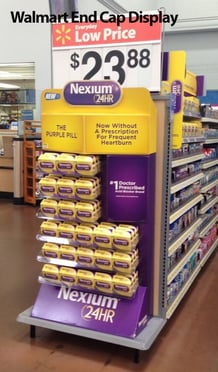
6. Keep Your Most Important Message at Eye Level
It seems like common design sense but if you’re not a designer, you might think your main message looks good at the bottom of the display.
A good rule of thumb is to keep your main message right of front of the customer’s eyeballs.
 Where that is will depend on what type of display you are creating (or how tall your customers are - ha ha!) but generally the header area of the display is best used for this purpose. Other less important messages can be placed lower or on the sides if needed.
Where that is will depend on what type of display you are creating (or how tall your customers are - ha ha!) but generally the header area of the display is best used for this purpose. Other less important messages can be placed lower or on the sides if needed.
7. Choose The Right Size Display For Your Need
 What are the opportunities for your product? Can they be sold on an end cap display? Or a side wing, floor display or counter display?
What are the opportunities for your product? Can they be sold on an end cap display? Or a side wing, floor display or counter display?
End Caps Displays are displays that can cover the entire end of a shelf unit. End Caps are a premium position in the store. They usually showcase multiple products because of the large space available.
You’ll find these in Walmart, Home Depot and Lowes. Some stores build end caps differently. Some use a poster over a stack of products, some want a complete display already packed out with product. These are usually impressive but high in cost. Some end caps require only a header and shelf talker.
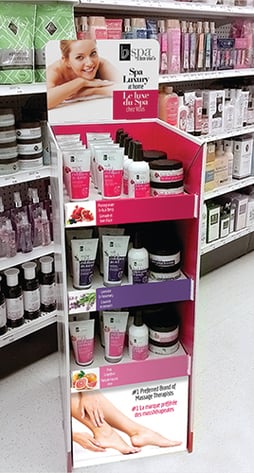 Aisle Displays or Floor Displays are free standing displays that offer great visibility in store. Right in the customer’s path. These are great to use when your product may be small and buried on shelf. This brings them into the aisle and/or possibly cross selling in another area of the store.
Aisle Displays or Floor Displays are free standing displays that offer great visibility in store. Right in the customer’s path. These are great to use when your product may be small and buried on shelf. This brings them into the aisle and/or possibly cross selling in another area of the store.
Side Wings or Power Wings are usually at the end of aisle but on the side. They also offer great visibility because the customer is viewing these when entering or exiting an aisle. Usually along high traffic paths in the store.
Counter Displays are used when the product is small enough to fit on a counter OR when the product is an impulse purchase bought at checkout. This type of display, if designed wider, is called a PDQ and can also be used on the shelf when a pack out is used.
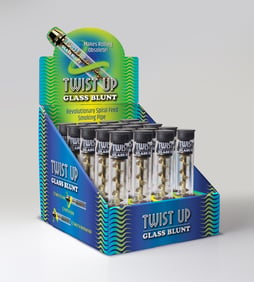 Many stores want displays at certain sizes ONLY. If they don’t fit, you may end up revising and reprinting.
Many stores want displays at certain sizes ONLY. If they don’t fit, you may end up revising and reprinting.
Be Aware: Each store has its own specifications. Make sure you know what they are, so there are no questions when they order from you.
8. Consider Creating Short Runs (Small Quantity) and Test
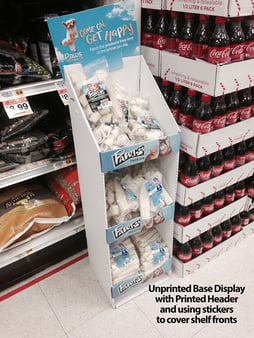 With digital printing, Even printing 10 custom sized displays is possible. Testing your display before you do a print a run of 1,000s can be advantageous. And because of digital printing, its not nearly as expensive as you might think.
With digital printing, Even printing 10 custom sized displays is possible. Testing your display before you do a print a run of 1,000s can be advantageous. And because of digital printing, its not nearly as expensive as you might think.
9. Make Your Display Easy To Purchase From
Make sure your products have enough room…designed with shelves that are not too tight. Picking the product up and out of the display should be easy and doesn’t require twisting the product awkwardly to remove it. Do the other products fall over when one is removed? Start thinking like a customer and don’t make it difficult to get products out of shelves or displays that can’t hold your product securely.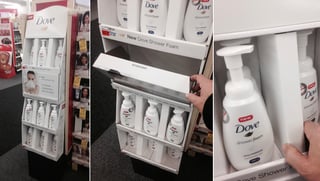
Also, think from a store’s vantage point - they don’t want the display to be a pain. They don't want to take the time to freshen up your display. Making more work for the store won't keep your display up as long as possible.
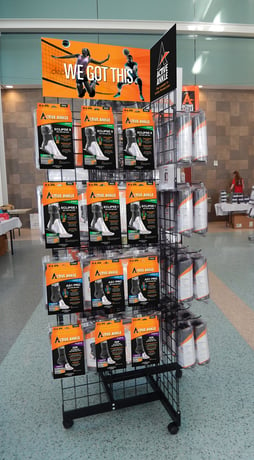 Don’t cover your products behind shelves or other parts of the display. How tall is your product? How deep is your shelf? How deep is your product label? Will the shelf lip obscure the package design? Try to show all OR almost all of your product while on the display. You need to make sure it stays on the shelf and is held secure enough. if you are sending displays to the store fully packed out, then
Don’t cover your products behind shelves or other parts of the display. How tall is your product? How deep is your shelf? How deep is your product label? Will the shelf lip obscure the package design? Try to show all OR almost all of your product while on the display. You need to make sure it stays on the shelf and is held secure enough. if you are sending displays to the store fully packed out, then
You spend a lot on brand identity so no need to hide your brand when its in a display.
10. Know The POP Display Building Process and Ultimately Your Timing
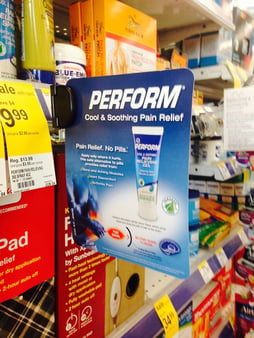 Knowing the POP building process and timing is important to meeting your store deadlines. Here's a quick rundown:
Knowing the POP building process and timing is important to meeting your store deadlines. Here's a quick rundown:
Design Phase - 5 business days
Production Phase - 5 business days
Printing Phase - 7 - 10 business days (if printing digitally) 3 - 4 weeks if printing offset
Always factor in shipping time to final location or stores.
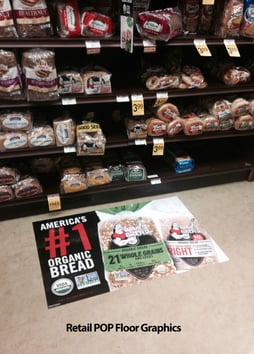 Fulfillment is another factor to add to your timing equation. Will you be adding products to the display yourself OR will you use a service to pack them out and drop ship to stores ?
Fulfillment is another factor to add to your timing equation. Will you be adding products to the display yourself OR will you use a service to pack them out and drop ship to stores ?
I hope you found these Tips useful. Please let me know if there are any additional tips you have found useful.
*Images are from a variety of sources, and not all are Catalpha designs.

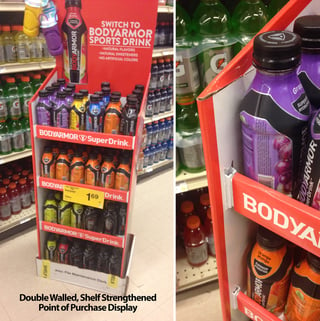
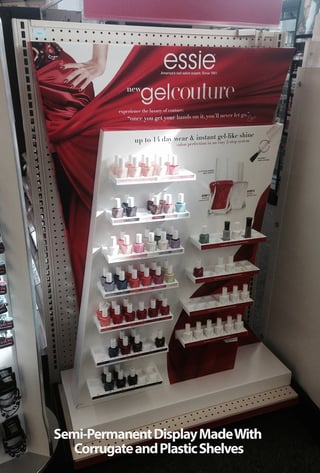
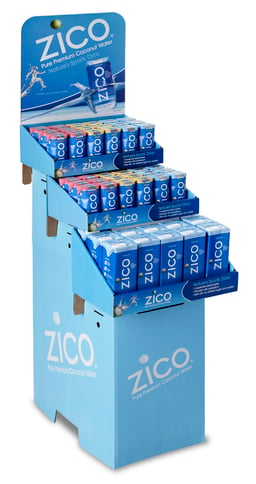
Additional Resources:
How To Assemble Different Types Of POP Floor Displays (Video)
How Much Do Point of Purchase (POP) Displays Cost?
7 Reasons Why You Thought Your Product Didn't Need a POP Display (And Why They're Wrong)

